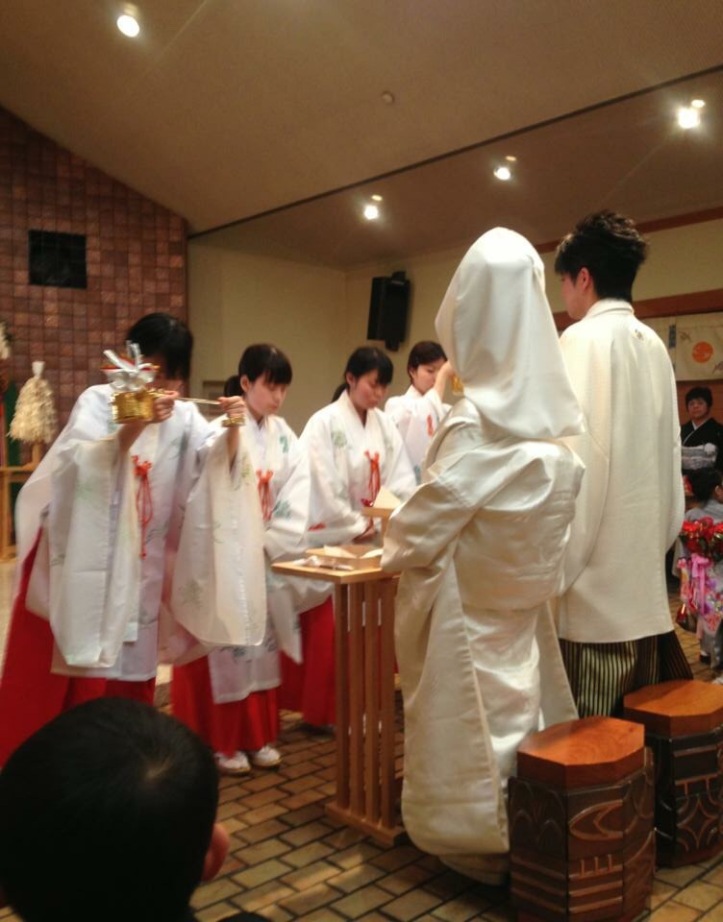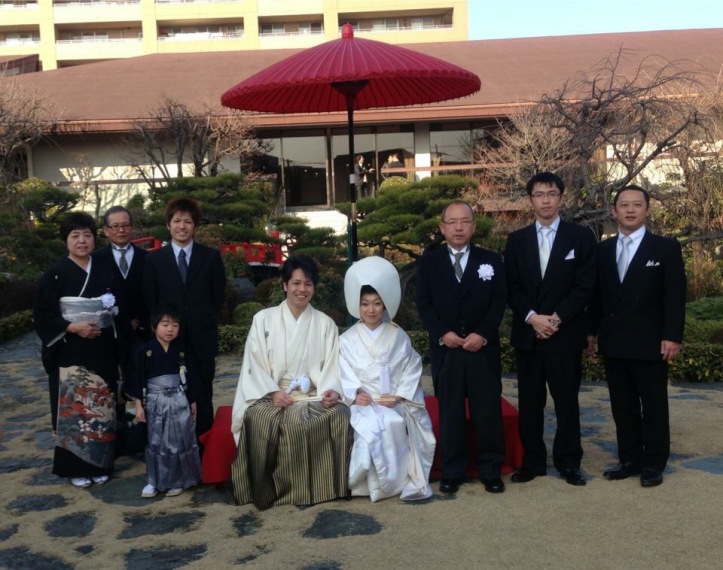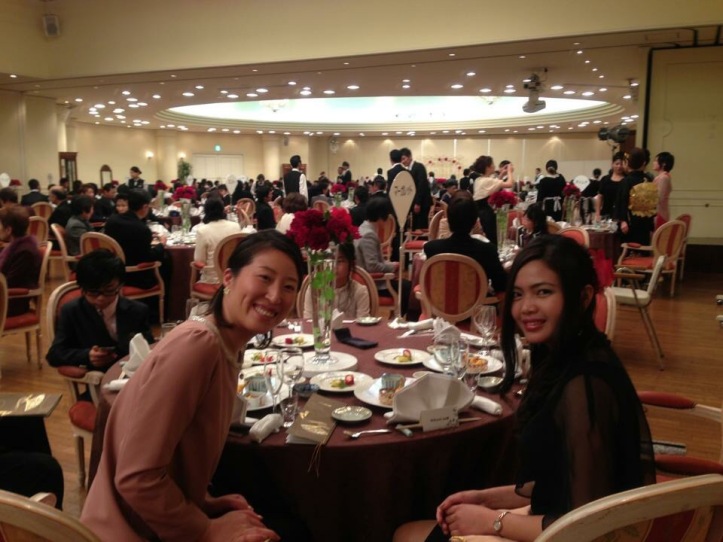Wedding is one of the most celebrated events in one’s life all over the world. It is interesting to note that saying “I do” and the intricate details of getting married may be the same, slightly different or the complete opposite in one culture from another culture.
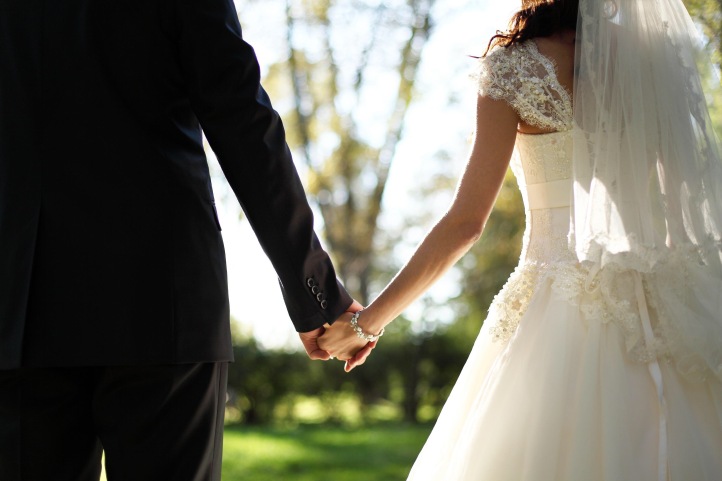 tickera.com
tickera.comIn this article, we will talk about the wedding cultures in Japan and the Philippines. Being a Filipina living in Japan for few years now, I am confident to say that I can at least share to you a little knowledge about this matter straight from my own experience. Some of it you may already know and some may surprise you. Some might make you feel glad that you are born Japanese or Filipino or the other way around.
Japan
Getting married in Japan is very practical and let me say very realistic. Let me enumerate them one by one.
1. Getting married in the city hall.
A couple can get married officially by going to the city hall and file a report of marriage. All you need to do is fill up a form where two witnesses sign, submit a paper proving you are eligible to get married, some pertinent documents like family register and that’s it. Once you submit these documents, get a marriage certificate, you’re officially married. This is the only way to legally get married in Japan. The marriage date is when you submit the papers.
2. Wedding ceremony.
It is a common practice for Japanese to have a wedding ceremony after the official marriage in the city hall. The ceremony can be traditional or western style. This is when the couple with their families invite relatives and friends to celebrate with them.
3. Wedding clothes
In a traditional Japanese wedding, the bride and groom wear the traditional wedding clothes. A black montsuki kimono and hakama for the groom and white shiromuku kimono for the bride. The couple also change attire to a more western style during the reception. Some brides get to change to three to five different gowns during the wedding party.
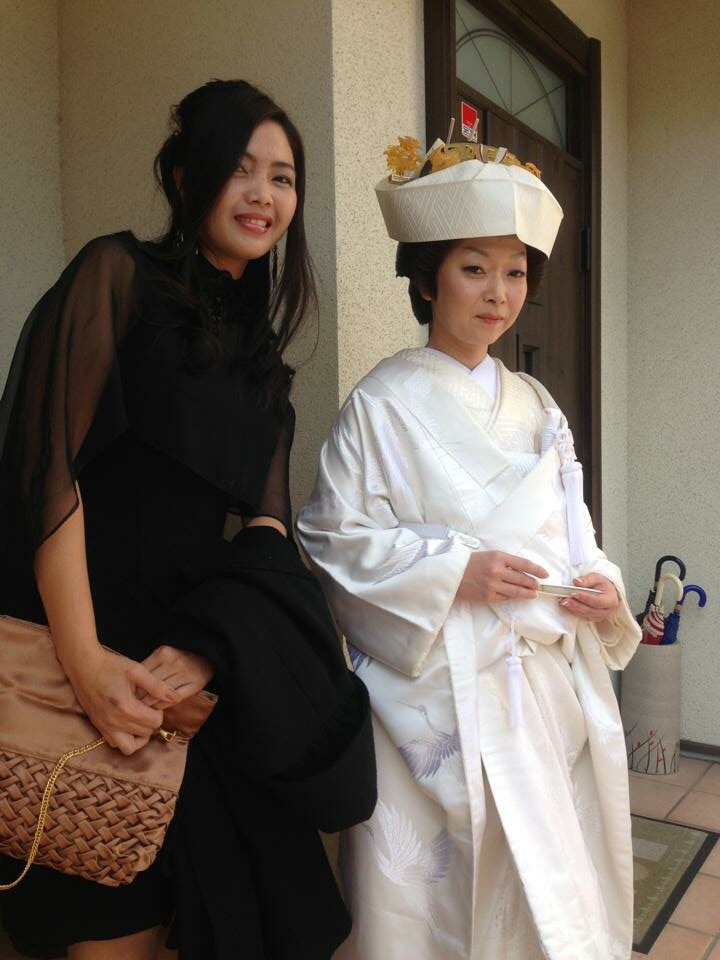
The guests usually put on a formal wear, usually dark colors. It is not uncommon to see guests wearing black dresses.
4. Money gift
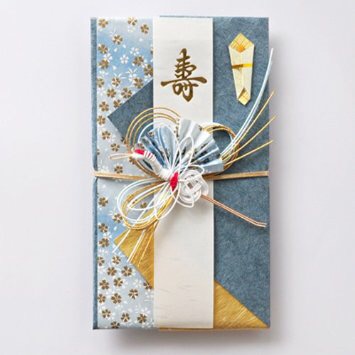 money envelope
money envelope
This part of the wedding culture of Japan make a lot of foreigners’ eyes bulge and mouth utter a big “WHAAT?!” in surprise. In Japan, all invited guests, even family, will have to give a certain amount of (big) money to the newly wed. Immediate family should give the largest amount of money, especially the eldest sibling, usually up to ¥100,000. or more and friends should give at least ¥30,000. This money will help the newly wed cover for the wedding expenses. A very good idea, isn’t it?
5. Wedding Souvenirs
Wedding souvenirs in Japan are not just ordinary cute display. Couples usually give their guests something that can be used at home like kitchen wares. On the first Japanese wedding I attended, I got a set of three ceramic food containers. It’s so awesome. In another wedding, we got a half dozen of glass.
6. Wedding party
Wedding party does not end at the reception. They usually have a nijikai, an after party or a second party. Others even have sanjikai, a third party. Guests, especially the young ones go to clubs or karaoke and drink like there’s no tomorrow.
Philippines
Marriage in the Philippines can range from the very simple mass wedding, where many couples are wed at the same time, to the very elaborate grand wedding.
1. Pre-marriage preparation
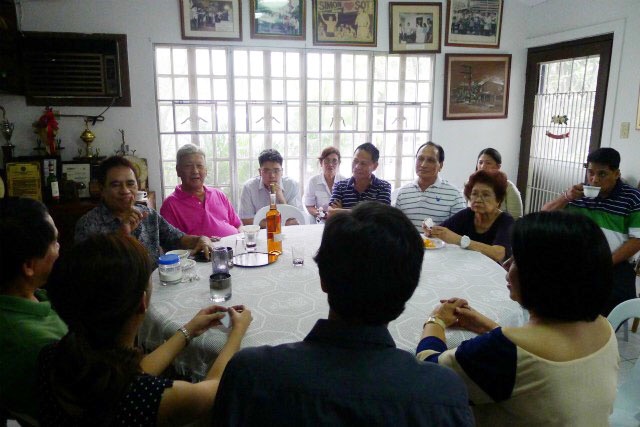 gmanetwork.com
gmanetwork.com
Getting married in the Philippines traditionally starts in a pamanhikan. This is when the man and his parents go to the woman’s house and ask permission to her parents to marry her. There is a small celebration and eat together during this occasion. In a very traditional family, there is a so-called dowry. It is the money and/or precious gifts given by the man’s family to the woman’s family as a symbol of gratitude. But, nowadays, pamanhikan and dowry are slowly disappearing.
Before a wedding ceremony can take place, a couple must secure a marriage license from the city hall, and undergo a pre-cana seminar, a seminar required by the Catholic church. Another pre-marriage preparation that is trending recently is having a pre-nuptial photoshoot. Unbelievably, Filipinos spend so much money for this photoshoot. Blame it to the social media and the photo fanatic society.
2. Wedding ceremony
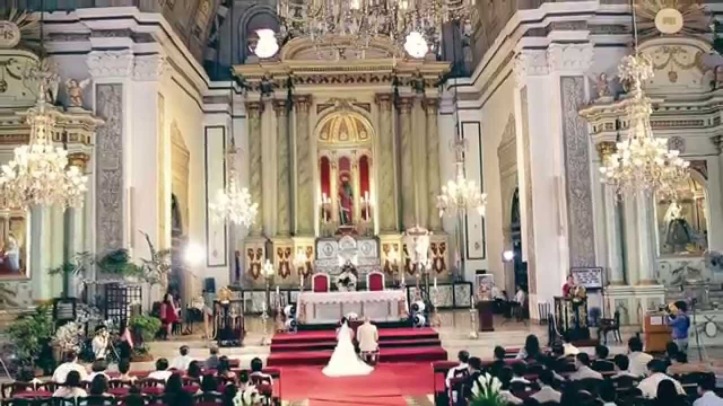 youtube.com
youtube.com
Eighty percent of the Filipinos are Roman Catholic, so most prefer to have a church wedding , although a couple can also have a civil wedding less the hassle of submitting a bunch of requirements for a church wedding. Both church wedding and civil wedding are legally recognized.
There are so many superstitious beliefs that surround a Filipino wedding ceremony. You might as well do a separate research for this. A church wedding is a mass with the traditional ceremony including the lighting of the candle, putting on veil, putting on cord, and passing of coins, each with a specific meaning.
3. Wedding clothes
 White wedding gown is the usual trend among Filipino brides matched with tuxedo for men. It is also common for men to wear barong tagalog, the traditional costume for Filipino men. A color motif is also a tradition in Philippine weddings. If the color motif is light green, everything should have at least a touch of light green, from the entourage’s clothes, guests’ clothes, reception decoration, cake, invitation card, and everything in between.
White wedding gown is the usual trend among Filipino brides matched with tuxedo for men. It is also common for men to wear barong tagalog, the traditional costume for Filipino men. A color motif is also a tradition in Philippine weddings. If the color motif is light green, everything should have at least a touch of light green, from the entourage’s clothes, guests’ clothes, reception decoration, cake, invitation card, and everything in between.
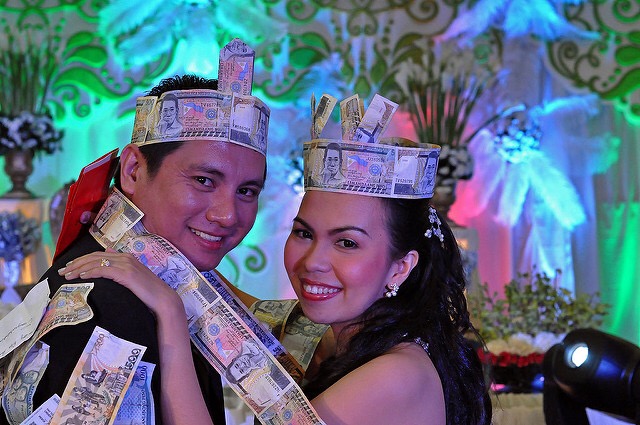 forumbiodiversity.com
forumbiodiversity.comThis is one tradition that has been passed from generations to generations. In some point during the wedding party, the newly-wed will have their first dance as a married couple and while they are dancing, guests will pin money on their clothes. The relatives of the groom will pin on the bride’s clothes and the bride’s relatives pin on the groom’s. The money collected will serve as a gift to the couple.
5. Wedding gifts
The newly-wed receives gift from the guests. It can be as big as a washing machine or refrigerator or as small as a dozen of spoons. There is a part in the wedding party where couples open the biggest and the smallest gift.
6. Wedding party
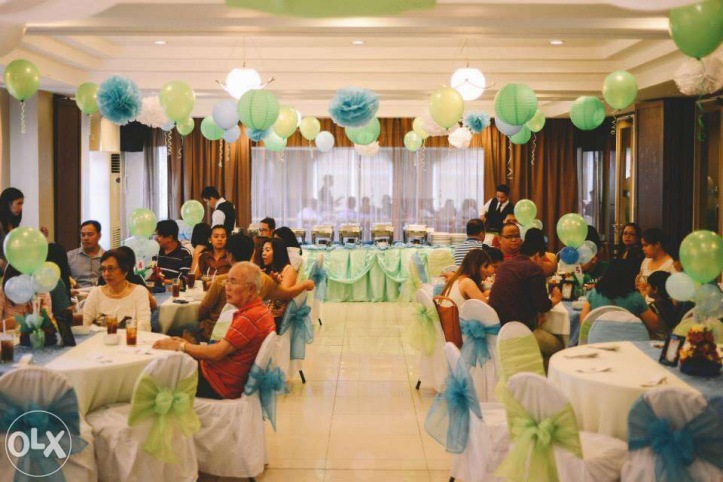 olx.ph
olx.phWedding parties in the Philippines can be classified into two types. One is held in a commercial place like restaurant, hotel or resort. The other one is in the residence of one of the newly-weds (usually the bride’s). People in the city usually have their wedding receptions in commercial places and pay large sums of money for a specific number of guests. On the other hand, people from the countryside prefer to have the reception in their house and most of the neighbors (the entire community) take part in the celebration.
Contrasting Points
- Wearing black dress in Japan during a wedding celebration is alright but never in the Philippines. It is considered as a sign of disgust and sadness.
- Filipino guests don’t have to give money gift to the newly-wed like in Japan, instead, material gifts are given to the couple which are commonly household items to help the newly-wed in their start of a new life together. Rather, the newlywed can receive money through money dance.
One of the many interesting things you’ll learn from living abroad is that you get to know the foreign country’s culture and your own culture more deeply as well.
